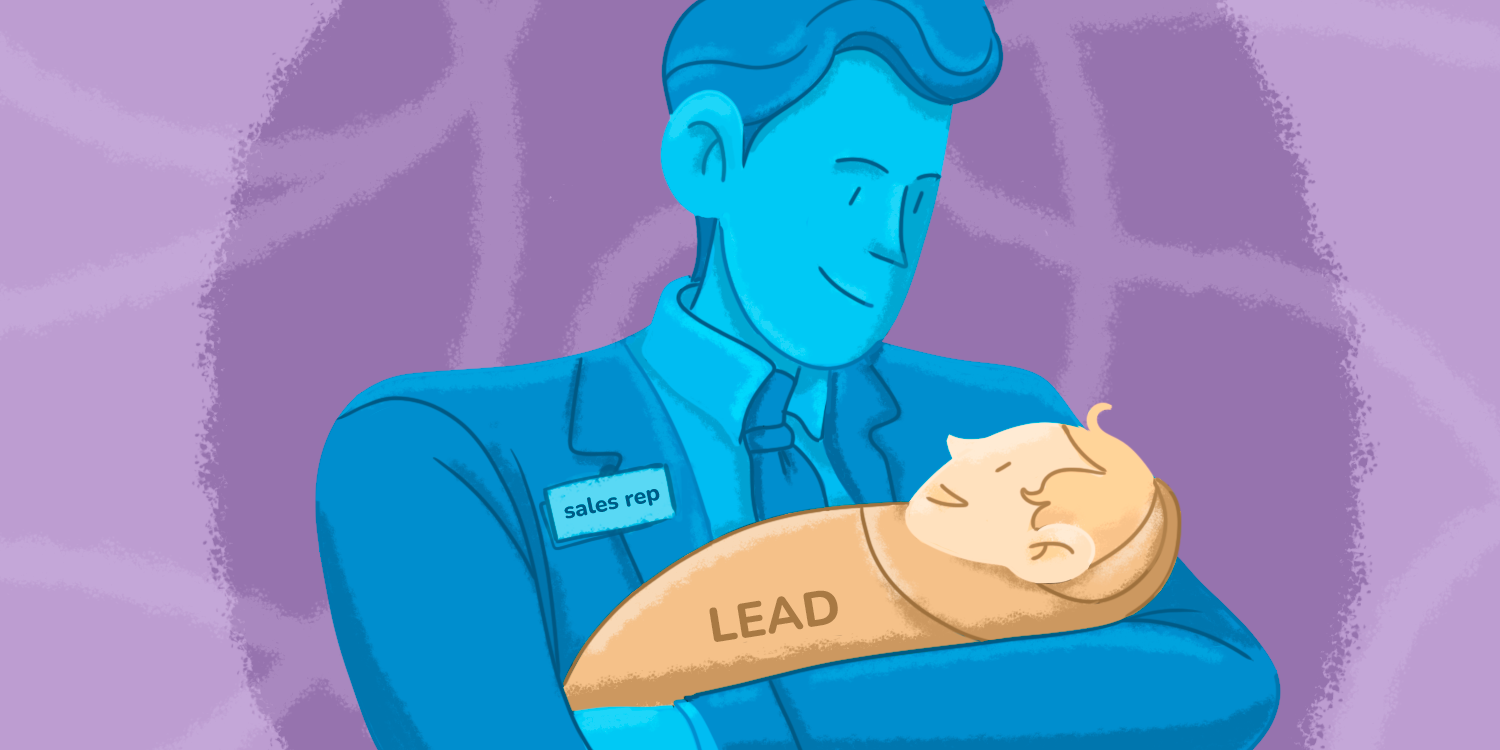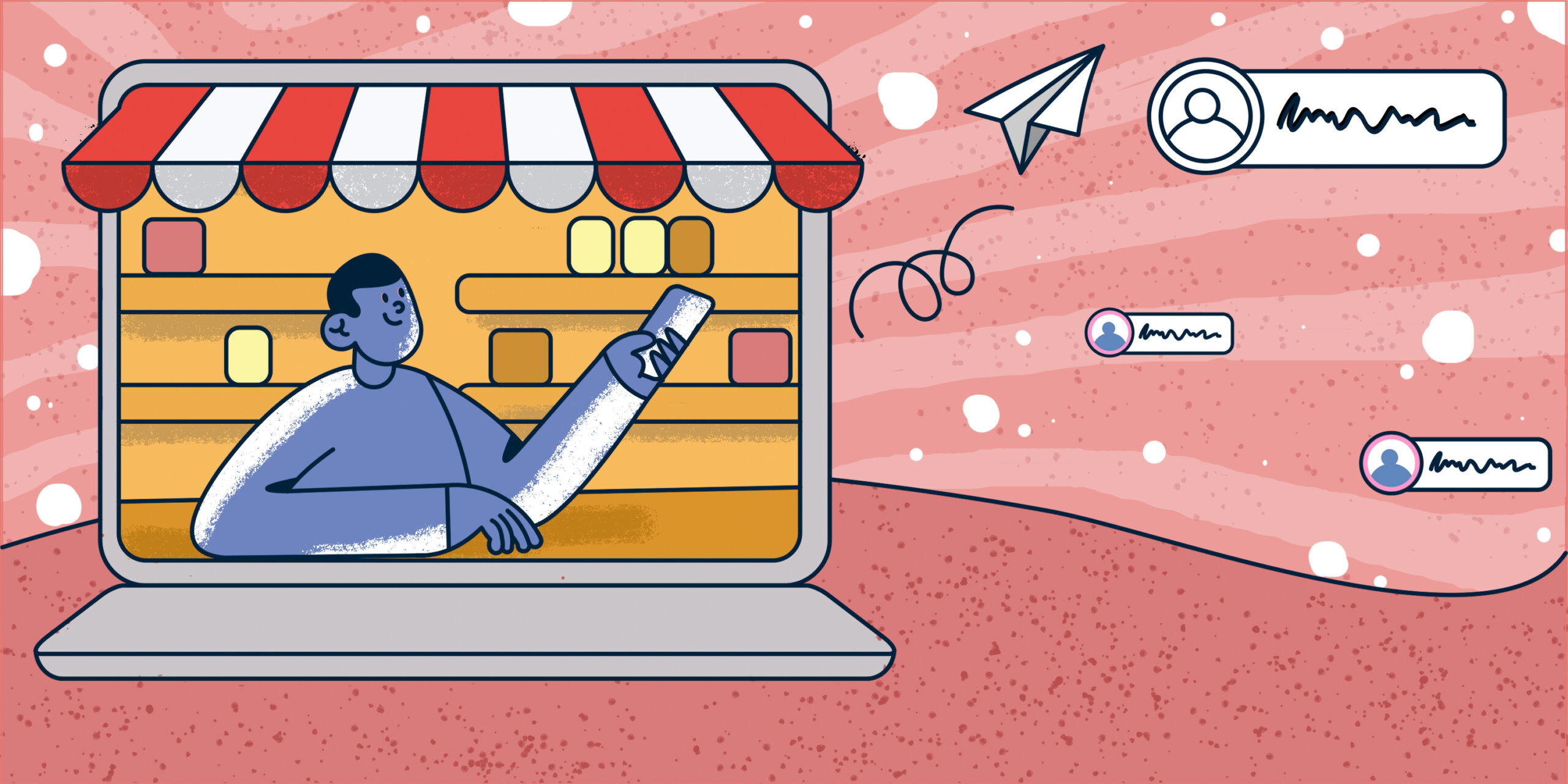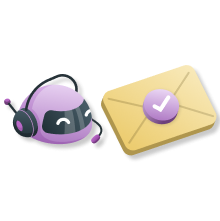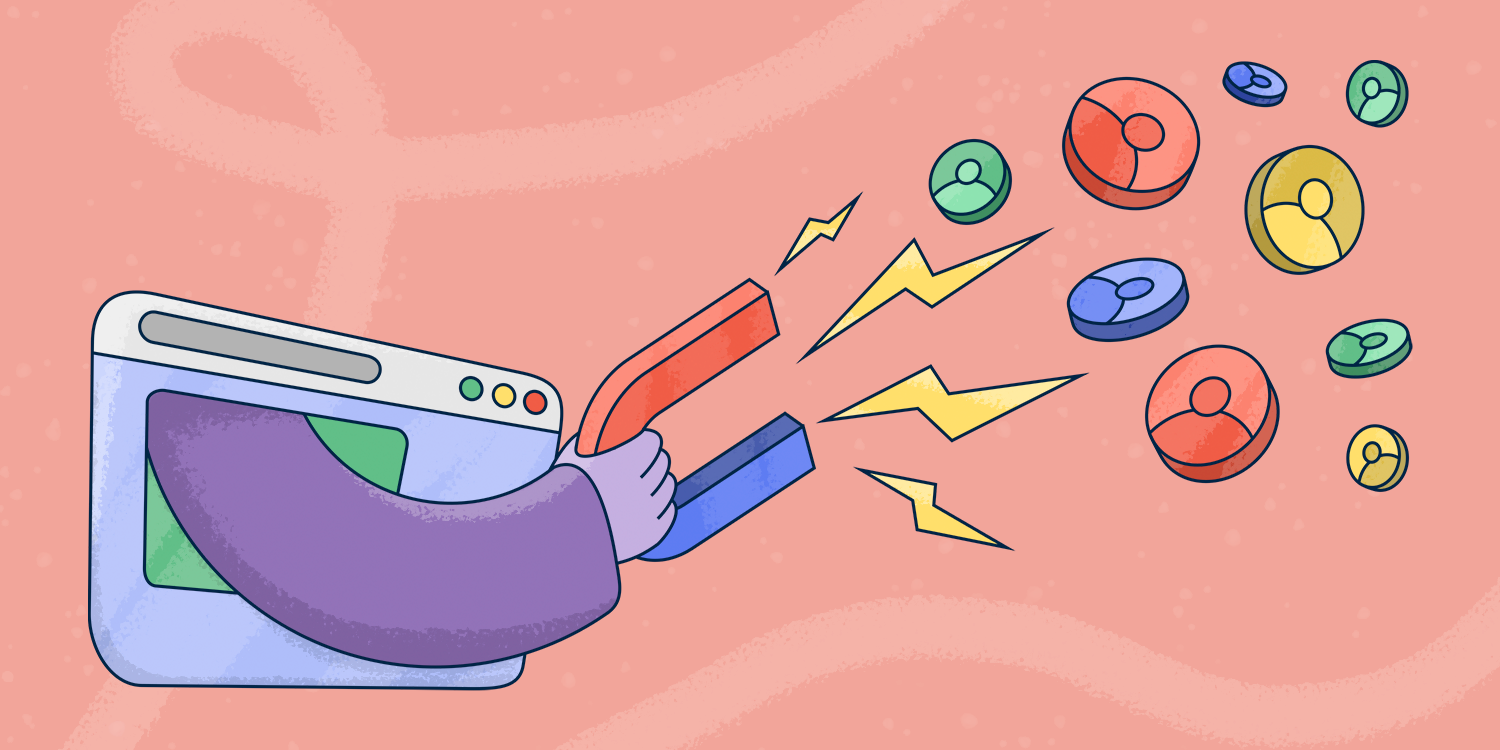Okay, you’ve gathered a solid base of leads. Awesome! Now what? The worst thing you can do is pitch your product to all of them. Instead, you need to think about the effective lead nurturing strategy that would help you guide your leads to the stage where they’re thinking, “Hey, I really need what they’re offering.”
In this blog post, I’ll do my best to tell you all you need to know about the lead nurturing process, lead nurturing strategy, and lead nurturing best practices.
Yeah, you’ll see that phrase—a lot, but it’s worth it, I promise. 🙂
Outline:
What is lead nurturing?
Let’s start with the lead nurturing definition.
Lead nurturing is the process of building and maintaining relationships with potential customers throughout the stages of the sales funnel. Its mechanism presupposes that you focus on the real needs of your leads and engage with them until they’re ready to buy your product, while educating them on your brand and its value.
Lead nurturing vs. lead generation
Lead nurturing and lead generation are two interconnected components of the sales and marketing process, each playing a crucial role in converting prospects into customers.
Lead generation comes first and boils down to attracting and capturing leads who have shown interest in what you’ve got. It focuses on the initial stages of the buyer’s journey, where your aim is to fill the sales pipeline with a pool of qualified leads and initiate the relationship with potential customers.
After you’ve said your hellos, you start the lead nurturing process, fostering and strengthening this relationship over time, building trust with your leads, and ultimately moving them closer to a purchase decision.
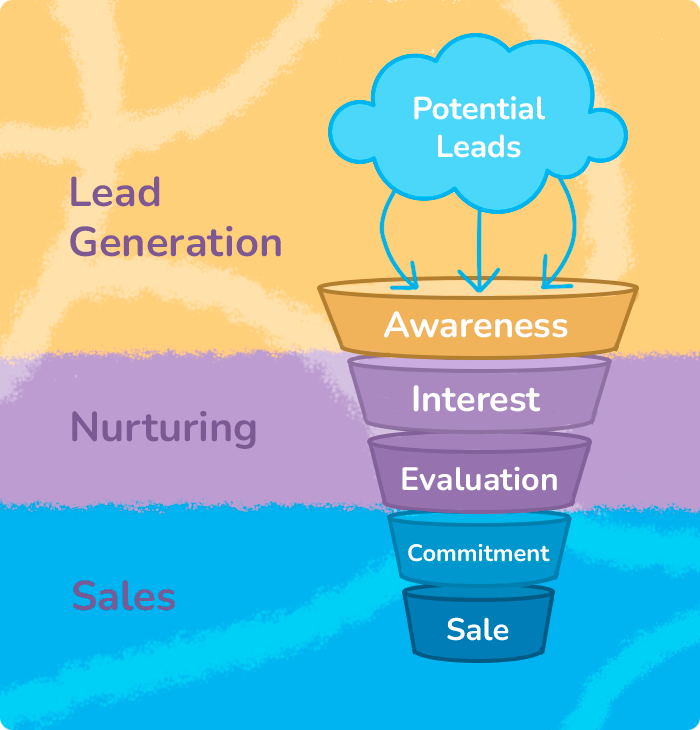
Why lead nurturing matters: top lead nurturing statistics as of 2024
I like numbers. They help realize where to focus and what goals to pursue. So, when it comes to nurturing those precious leads, here’s why you should sit up and pay attention:
- Lead nurturing helps generate 50% more sales-ready leads at 33% lower costs.
Picture this: You and Сompany N start with the same number leads. But you contribute to an effective lead nurturing strategy – unlike your competitor– so you’ll get more leads who will be ready to buy your product at the end of the sales cycle, spending less money on the process than Сompany N:) - Nurtured leads make 47% larger purchases than non-nurtured leads.
Not only will more leads be ready to buy your solution, but you’ll actually get more sales at the end of the day. - 79% of marketing leads don’t convert into sales
The culprit? A lack of a lead nurturing program. And that’s the moment of a cold shower. Imagine what you’re losing if you neglect to provide a strong lead nurturing mechanism in your company.
How to create a lead nurturing strategy step by step
So, you’re on board with the whole “lead nurturing” thing, right? Here’s a friendly guide to creating a lead nurturing strategy step by step, with clear actions and lead nurturing examples.
Step 1. Set purposeful lead nurturing goals
Your ship can’t reach the shore if you don’t plan the route, right? The same is true with your lead nurturing process.
An effective strategy starts with the goal. Remember that your lead nurturing goals should be measurable and align with your overall sales or marketing strategy. Determine the specific outcomes you want to get, define the criteria for an effective lead-nurturing campaign, and outline the actionable steps that you expect your leads to follow.
For example, your lead nurturing goal might look like this:
Increase engagement and move 30% of your leads from the awareness to the consideration stage within a quarter.
Step 2. Do lead scoring
Here’s the thing: Not all leads you generate are equally important for your sales funnel. You should sift through the list and cherry-pick the high quality leads.
→ Check out how to refine your leads with Snov.io
The best way to qualify your leads is to use the lead scoring system. It allows you to evaluate leads by assigning each of them a score based on the level of their readiness to buy your solution.
For example:
You’ve got a list of criteria to assess how your leads fit your company (say, their social media interactions or behavior on your website). Assign numerical values to each of these criteria. Leads with the highest scores will suit you for further lead nurturing.
Step 3. Create buyer personas
This is a must-have point in your lead nurturing plan as it allows you to create content that will be specifically tailored for each buyer type. Your task is to identify buyer personas and think what lead nurturing content to use for each persona.
For example:
One of your personas is a marketing manager in the USA with 8+ years of experience. Bombarding them with basic marketing content? Nah! How about something more sophisticated: guides on advanced digital marketing strategies, case studies, podcasts featuring marketing thought leaders, or monthly webinars featuring industry experts?
Step 4. Create relevant content
With your personas in hand, it’s time to craft content that would resonate with each buyer type, depending on where they are in their buyer journey. Personalization is your key to success at this stage.
For example:
You’ve decided to create a lead-nurturing email campaign to help your lead feel closer to your company through your webinar with a marketing expert. Now, you need to think over a chain of personalized email messages that would 1) invite a prospect, 2) remind them of a webinar, 3) ask for feedback after the webinar, etc.
Step 5. Launch lead nurturing campaigns
Content prepped? Check. Now, set up your campaigns across various platforms, integrating emails, social media posts, videos, you name it. This will help you grow engagement with your leads, boost your brand recognition, and build trust.
For example:
Launch a nurturing email campaign, run a text-and-video blog with valuable guides, and make social media posts where you’ll share industry trends and success stories. And hey, why not create some LinkedIn groups for networking for a touch of exclusivity?

Social Selling On LinkedIn: A Step-By-Step Guide
23 July 2024
Step 6. Track results and optimize
Track results from your lead nurturing campaign to measure how successful your lead nurturing process is. This will allow you to see what went wrong and improve your effort and goals if necessary.
For example:
If your lead nurturing campaign has not brought you the desired results, focus on the most problematic areas and do A/B testing to understand which version is more effective. This will help you avoid bottlenecks next time and get more conversions.
Types of lead nurturing campaigns
Randomly throwing content into the sales funnel won’t make your lead nurturing process work like a charm. In this chapter, I’ll share the most effective types of lead nurturing campaigns to be used at every stage of the funnel.
Stage 1. Awareness
During this stage, lead nurturing aims to educate and engage prospects who are just discovering your brand. Focus on providing valuable and relevant content that addresses their pain points, establishes your expertise, and fosters brand awareness.
Use blog posts, educational resources, and introductory content to lay the foundation for a positive and informed customer journey.
Two types of campaigns fit this stage:
Welcome campaigns
This is a series of messages whereby you start by confirming and thanking the prospect for signing up as a subscriber and end when the lead starts actively interacting with your brand – by visiting your website, social media pages, or blog.
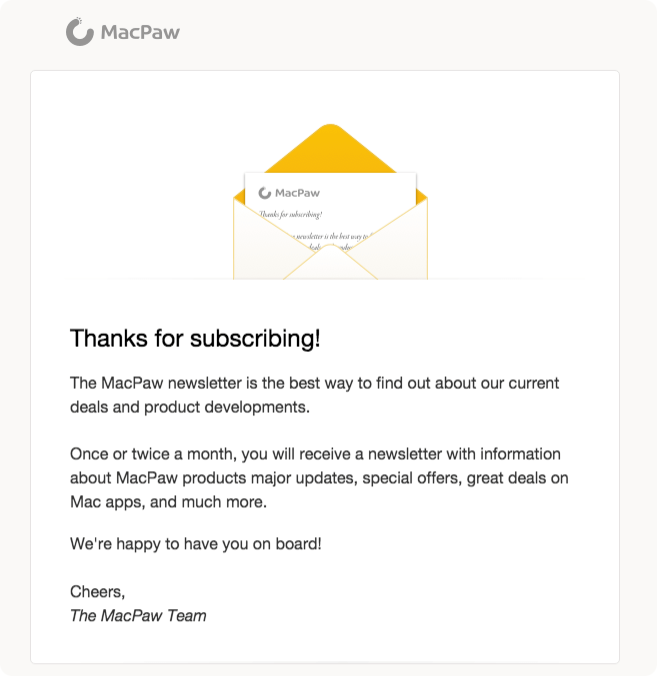
→ Need some inspo? Discover the top 10 welcome email templates for a robust start.
Educational campaigns
You should put them into action as soon as you’ve segmented your list of leads and defined your buyer personas. The aim of educational campaigns is to capture attention, showcase your brand’s knowledge, and build the foundation for a lasting relationship while prospects are moving through the awareness stage.
Content you can share in your educational campaigns includes:
- Expert-crafted blog posts
- Digestible guides and ebooks
- Handy checklists
- Interactive quizzes and surveys
- Insight-packed webinars
- Podcasts

Stage 2. Consideration
Lead nurturing at the consideration stage shifts towards providing more detailed and specific information to prospects actively evaluating solutions. The focus is on guiding them through the decision-making and buying process and connecting them to your product.
At this stage, focus on the following campaigns:
Promotional campaigns
Such campaigns aim to address how your product or service can solve a lead’s problem, answering all the questions prospective customers might have about your solution.
At this stage, you should share service or product-related content, such as:
- Free trials or samples
- Case studies and testimonials
- Webinars (unlike educational webinars, these must be webinars that focus specifically on your product/service value)
- FAQs and product recommendations

Discovery campaigns
The main goal of these campaigns is to draw your lead to a discovery call or a demo. The most effective way to nurture leads with this campaign is to use discovery ads. They are designed to appear across various Google properties and platforms, such as YouTube, Gmail, and the Discover feed, targeting audiences based on their interests, behaviors, and demographics.

Stage 3. Conversion
At this stage, a lead knows everything about your product and brand, so what you need to do is produce the last wow-impression that will make a lead buy your offering. Your lead nurturing efforts here should focus on boosting your lead’s confidence in your product.
Let’s look at the kinds of campaigns that could yield great results:
Authority perception campaigns
These campaigns should be based on social proof to reassure leads buying your product will be a great choice. What’s more, you should remind your leads about your competitive advantage to prevent them from going to other company’s websites.
|
What’s social proof in marketing/sales? Social proof is all about the influence of feedback, reviews, testimonials, or endorsements on your decision to trust and connect with a product, service, or brand. |
Here is the lead nurturing content you can use:
- Testimonials
- Service comparisons
- Honorable mentions
- Posts about recent awards won
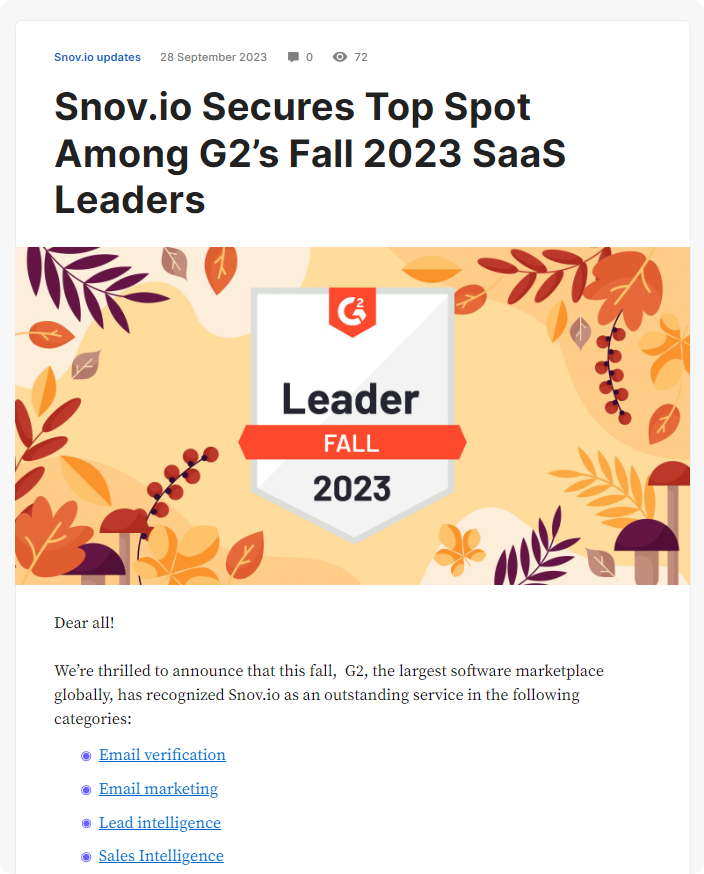
Special offer/discount campaigns
Here’s the thing. Leads might have various objections you need to handle during your sales pitch. If their main objection is price, there are high chances you’ll need to put some effort at the final stage of the funnel to demonstrate you care about their worries – that’s all about special offer/discount campaigns that have proven effective at the conversion stage.
You can offer your leads a free trial/plan, limited-time offers, or exclusive discounts to keep them in the game and make a purchase decision.

Stage 4. Retention
Now that your leads have been successfully nurtured and become your paying customers, your nurturing campaign should stop.
What? Did you believe it?
No, my dear, your nurturing campaign must go on. 🙂
You need to maintain active communication with them to ensure they become loyal to your company and are ready to repeat their purchase. So now, you’re entering a new stage – customer nurturing.
Depending on the type of your business, you can run the following campaigns on the retention stage:
Customer onboarding campaigns
This campaign is aimed at introducing new users to your product or service seamlessly. Utilize onboarding emails, tutorials, and personalized support to guide them through key features and ensure a positive first experience with your company.
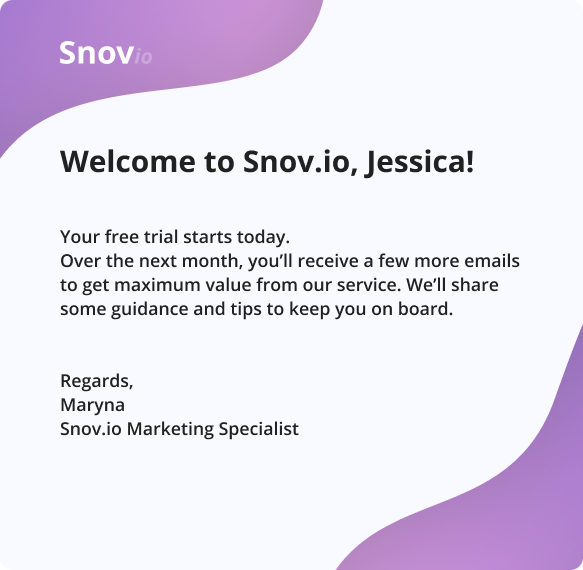
→ Get the top 10 examples of email drip campaigns for your business
Contract renewal reminder campaigns
If your company offers a subscription or contract-based service, you can effectively use a contract renewal reminder campaign. For example, you can send an email message where you remind them of the good times, highlight the perks of staying on board, and seal the deal for another term.

Re-engagement campaigns
Re-engagement campaigns can be an effective way to reach out to those customers who haven’t engaged with you after a purchase and bring them back on board. Your main goal is to remind users of your product/service and encourage them to take action – visit your website, update their preferences, provide feedback, or make another purchase.

Your re-engagement campaigns can be anything – from email drips and retargeted ads to good old social media engagement.
→ Learn more about how to convert leads throughout every stage of the funnel
Lead nurturing best practices
Lead nurturing is a complex and complicated process, so apart from a clear step-by-step plan, you need to keep in mind some working tactics that would help you nurture future customers like a pro:
1. Understand your buyer
You should clearly understand how your leads move through all the sales funnel stages and tailor your content for each phase. Knowing your ideal customer is crucial to the success of the lead nurturing process. Dive into their challenges, resonate with their pain points, and fine-tune your approach.
Ask your prospects about their interests and challenges and analyze past marketing campaigns to define which lead-nurturing content brought you the best results – just be where your potential buyer is.
2. Plan your lead nurturing process
I’ll never stop saying that you need a thorough plan before you start your lead nurturing campaign. Above, I’ve shared an example of a step-by-step lead nurturing strategy. Do it for your process, too. Think of every step, what you’ll do, what resources you need, and what results you want.
3. Align sales and marketing strategies
When sales and marketing sync up for lead nurturing, it’s like creating a tag team for customer engagement. They share the same game plan, ensuring messages are consistent and the customer journey flows seamlessly.
This teamwork prevents wasted efforts, allowing for timely follow-ups and adaptability to changing trends. With shared metrics, sales and marketing teams stay accountable and adapt lead nurturing strategies on the fly. It’s like a dynamic duo—sales team focuses on hot leads, the marketing team refines its approach, and together, they boost the overall conversion rate.
4. Use multichannel strategies
Focus on those platforms your leads use every day – emails, social media, mobile apps. By combining social media, email outreach, and paid retargeting, you get a multichannel lead nurturing strategy that will work much more effectively than an omnichannel approach.
5. Send lead nurturing emails
Did you know that lead nurturing emails get 4-10 more responses than standalone email blasts? That’s a sound reason to leverage email marketing for lead nurturing. With emails, you can ensure leads engage with your brand regularly – provided you personalize your email campaigns, of course.
Elaborate on every element of your email so it looks as if you’ve created it for a specific person (no matter how many leads you’ve got in your list). Subject line, email opening, email body tailored up to the preferences of your lead – all this will help you shine in the inbox of your prospective customers.
6. Follow up with leads immediately
What I mean here is that you need to promptly reach out to your lead upon noticing their interaction with your company. They’ve visited your landing or social media page? Subscribed to get more notifications about your product? That’s a signal you need to get in touch with them swiftly.
Contact the interested lead via phone, email, or messenger and appeal to their actions as a hook to tie up conversation and develop relationships.
7. Rely on customer feedback
Your existing customers can help you nurture your prospective customers. All you need to do is ask them to share their experience with your product. As soon as a customer has bought your solution, ask them which factors pushed them to purchase. You’ll use this information later to your advantage while working on a lead-nurturing campaign for new leads.
8. Schedule your touchpoints
Yes, you need to plan not only your lead nurturing strategy but every touchpoint – by scheduling your interactions. Sending email lead nurturing campaigns? Schedule them so that your leads get every new email within a chain based on their timing and frequency preferences.

Email Frequency: Best Practices For Email Marketers
25 July 2024
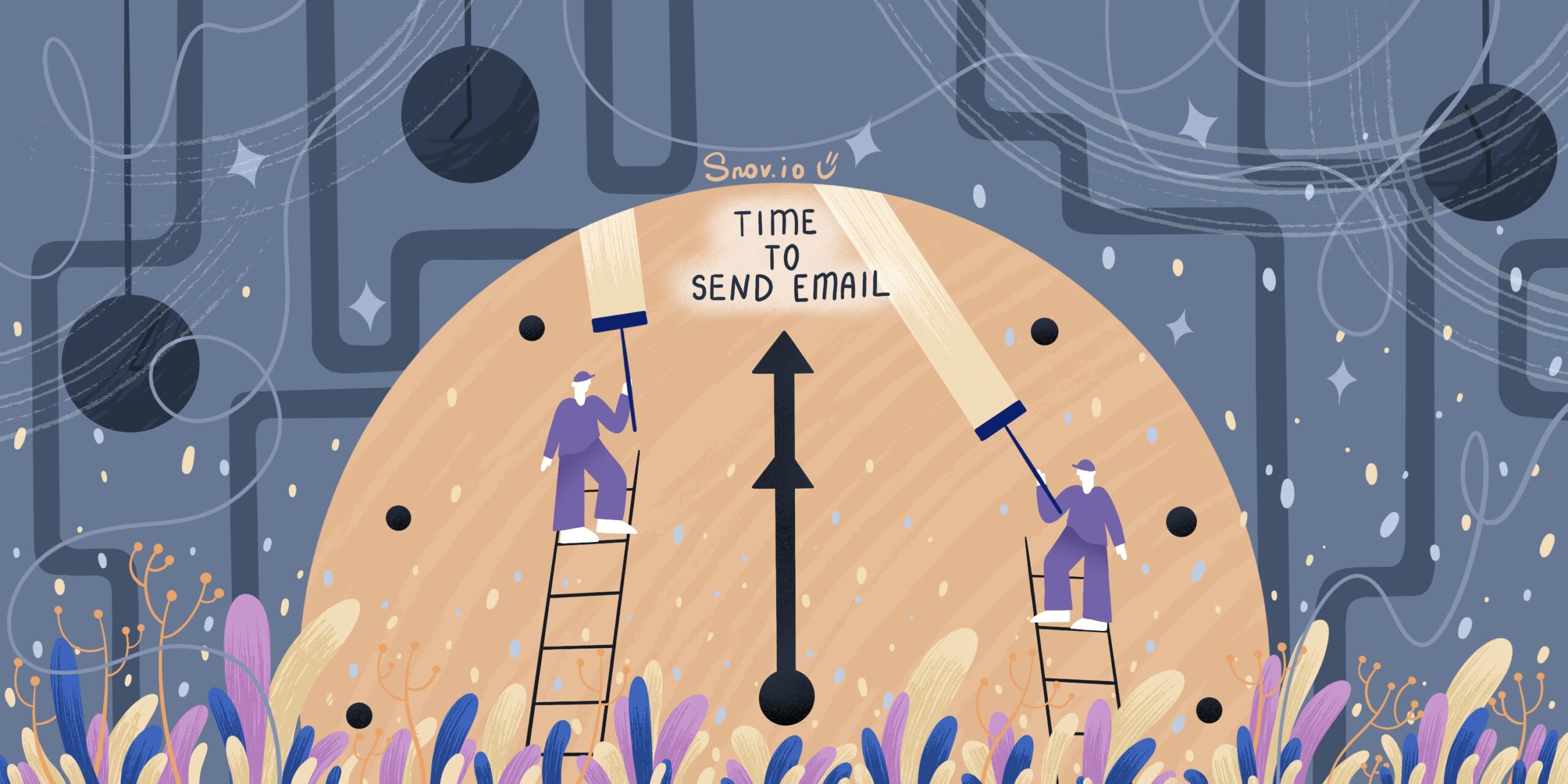
Best Time To Send Email (According To Science)
7 November 2023
9. Use lead nurturing automation tools
Sure, immediate follow-ups and personal touches are key, but if you’re scaling up, automation is the way to go.
For example, if you want to automate your lead nurturing email campaign, you can rely on Snov.io Email Drips, which will help you create a chain of personalized, AI-powered emails in no time, while scheduling your campaign based on the needs of your lead.
You can also program email sending so that every next message will be sent as soon as the lead reacts to your previous email.

Lead nurturing tools and technologies
Speaking about automation, I feel you deserve to learn more about the tools you can utilize to streamline your lead-nurturing campaigns. This chapter will be dedicated to lead nurturing software and technologies to help you automate your campaigns.
CRM Software
CRM allows you to keep all information about leads in one place, do lead scoring, track how leads are moving through the pipeline, and check how your campaigns are performing. This way, you can take total control of your lead nurturing process, always remember about timely follow-ups, and modify your lead nurturing strategy on the go if anything goes wrong.
For instance, with Snov.io CRM (it’s free for all users), you can organize your leads in folders, keep track of all the detailed information about them, see all the touchpoints at every stage of the funnel – all with the team view to align marketing and sales for successful lead nurturing.
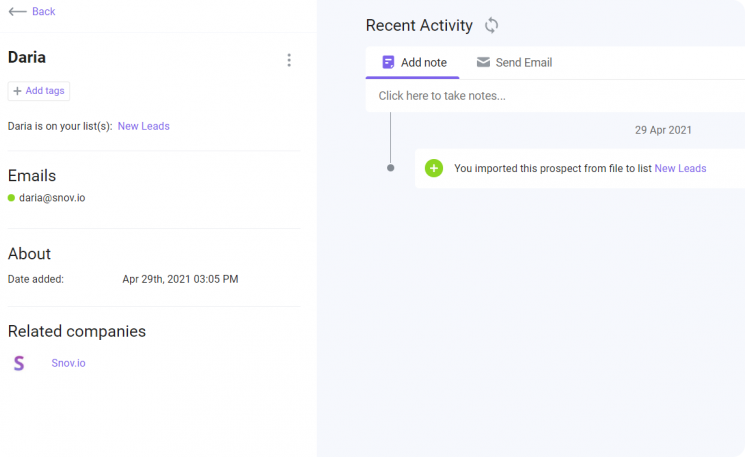
If you need advanced functionality, you can try other (paid) CRM solutions, like:
- Salesforce
- Zoho
- Farotech
Marketing automation software
Marketing automation tools are absolute heroes when it comes to successful lead nurturing. With email automation, in particular, you can segment your target audience based on behavior and preferences, craft engaging emails that guide leads through the sales funnel, automate follow-ups, and analyze metrics for continuous optimization and increased conversion rates.
|
Did you know that 66% of marketers use marketing automation for lead nurturing? |
Above, I’ve already mentioned how Snov.io Email Drip Campaigns can help you create and schedule your lead nurturing campaigns so that every lead in your list gets a personalized nurturing email based on their behavior and preferences. Meanwhile, you save lots of time as Snov.io automates the game for you and powers it with AI.
Other marketing automation tools you can use for lead nurturing:
- Keap
- ActiveCampaign
- Marketo
Wrapping up
Lead nurturing is akin to nurturing a plant, ensuring it grows from a tiny seed to a full-fledged tree. It’s about cultivating a relationship at every touchpoint, ensuring leads mature into loyal customers. With the right strategies and tools like Snov.io, you can perfect the art of lead nurturing, blending human touch with AI precision.
Ready to step up your game?
